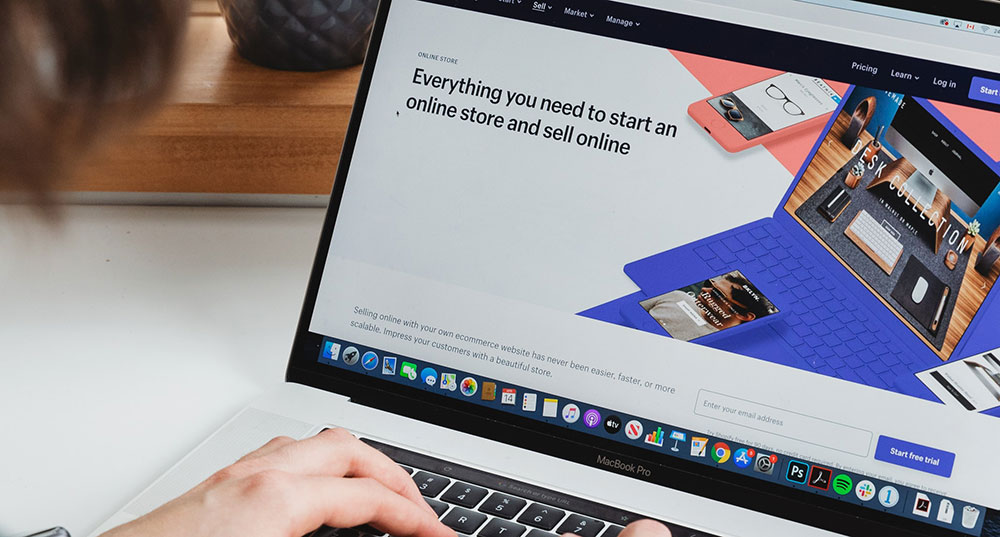Why Web Design Matters
Web design is important due to its impact on how your customers and site visitors perceive your brand. The impression your website leaves on them can go one of two ways: either it’ll get them to remain on the page and learn more about your business, or it’ll cause them to leave and turn to a competitor, costing you leads and potentially damaging your reputation in the process. After all, if your website looks outdated, clunky, or visually unappealing, visitors are likely to form an immediate negative impression of your brand.
What we’re saying is that web design really is essential. Read on to learn more!
1. It Aids Your SEO Efforts
Did you know Google and the other search engines factor your web design into their rankings when deciding where to showcase you in the search engine results pages (SERPs)?
Maybe they don’t say it exactly like this, but web design absolutely impacts your search engine optimization (SEO). This is because the easier it is for the bots to crawl your site, understand what your content means, and index your pages, the more likely the search engines are to feature your content when someone is looking for the thing you sell or offer. If your technical SEO factors aren’t on point, you might as well be pushing a boulder up a hill when you try to implement the other elements of your SEO strategy.
There are particular web design elements that can influence how you publish content on your pages. In addition, other web design elements can directly impact your search engine optimization efforts. A great web designer who’s knowledgeable about SEO will work to ensure your code is SEO-friendly.
If you want to get the most search engine visibility (and who doesn’t?!), it’s best to partner with a web design agency that speaks search engine optimization.
2. Site Navigation Can Make It or Break It
Ultimately, you want people to be able to find the information they need without tripping through cumbersome hoops. When a website is designed well, your visitors should be able to navigate your pages with ease.
If people get lost easily, or if your navigation is so difficult to understand that it causes frustration, people aren’t likely to stick around and endure the chaos. On the other hand, if your site is user-friendly, visitors are more likely to engage and perform whatever action you ask them to. In other words, well-designed websites aim to offer the best user experiences possible, which will then turn into higher conversion rates.
3. It Makes You Seem Credible and Approachable
Here’s the thing about website credibility: Some of the features of website design that are seen as credible will change from site to site and from industry to industry. For instance, someone who’s selling candles they make out of their home can probably get away with a website designed with warm, earthy graphics and friendly font, but that’s not going to work for financial planners. While “pretty” websites can work to influence people to buy in some situations, expectations and the environment also play very large roles in the decision process.
Suppose your site lacks credibility (i.e., a showing of knowledge and expertise in your field) or trustworthiness (meaning, you don’t seem honest and reliable). In that case, your brand’s image will suffer in the minds of consumers. However, if you’ve established credibility, it’ll be easier to grab personal contact information, have them revisit your site, and receive positive feedback and reviews from your audience.
4. We Eat with Our Eyes
Just like a good photo of your favorite restaurant’s lasagna can get your mouth watering, so will buyers’ mouths (so to speak) when they happen upon great websites built to their expectations and needs. A large part of what makes a brand appetizing is the love put into its website. When it comes down to it, plating in a restaurant is just as important as the food put on the plate.
The same holds true for companies and their website designs. People make decisions with their eyes. Whether they’re shopping for a brick-and-mortar store or a local service provider, audiences are more likely to put weight into how good a company will be to work with if it has an appealing website that looks and feels professional.
Think about it — marketers know people are influenced by packaging. That’s why the marketing and branding departments are so important to major companies. For any business these days, no matter how large or small, their website is their initial “packaging” being offered to potential customers. The cleaner and easier to navigate your website is, the more likely people are to be impressed by your brand in general.
Not Convinced?
This was just a quick glimpse into the importance of web design. If you’re not yet convinced, pull your analytics and see what’s working on your current site. Are there areas you could improve? If there are places where you’re losing traction fast, reach out to a professional web design team to help take you from red to black on your SEO bottom line.
Infographic Created By Name.com, Easy To Use Domain Reseller Program


Comments are closed.